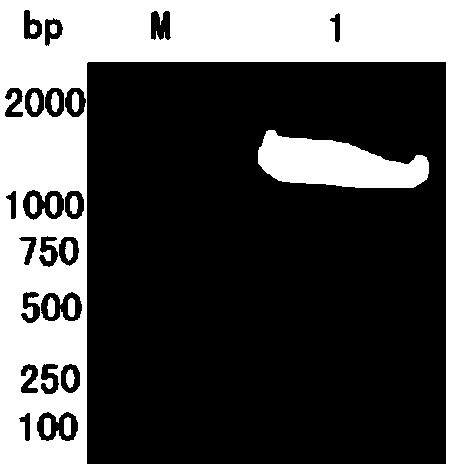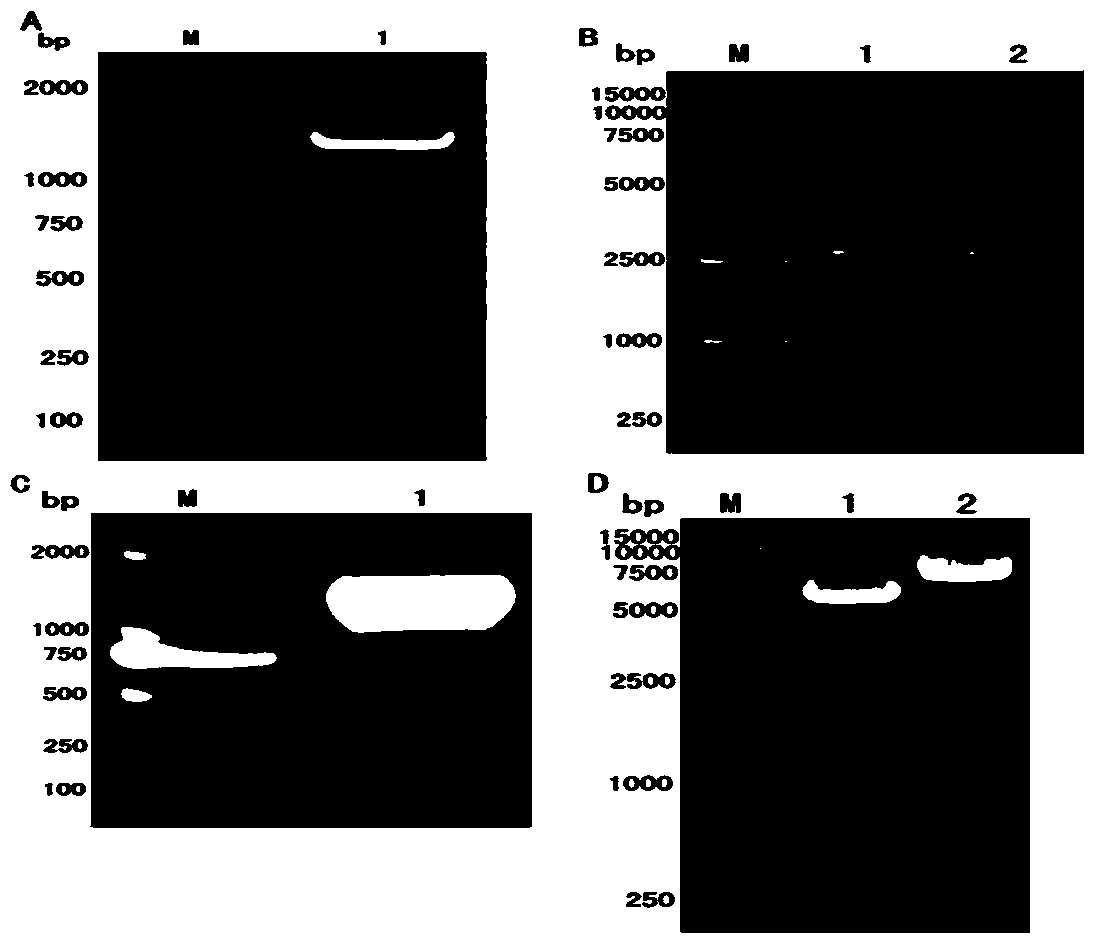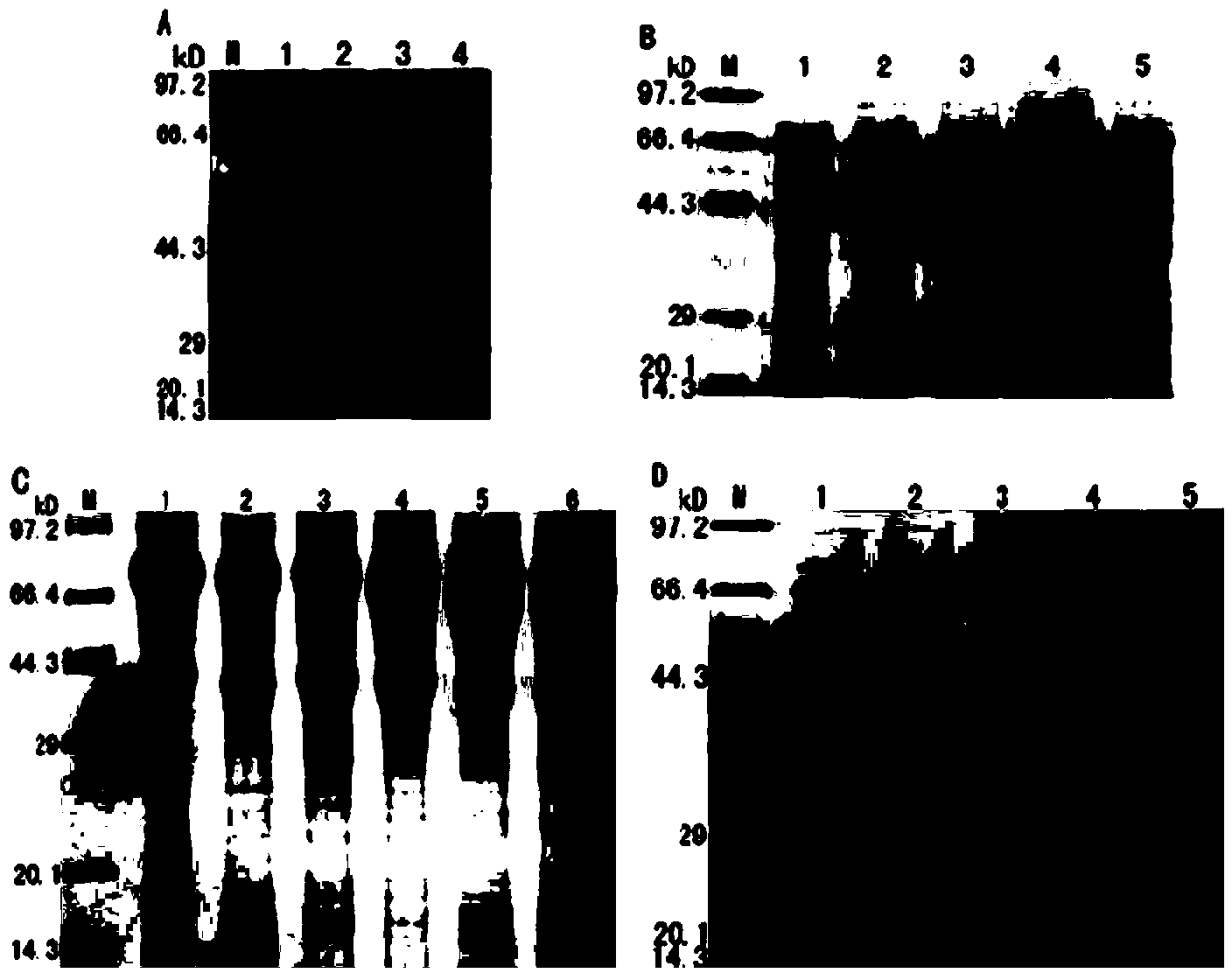Preparation method and application of soluble I-type DHV (Duck Hepatitis Virus) 3D protein
A duck hepatitis virus, soluble technology, applied in the field of biochemistry, can solve the problems of difficult, laborious, and time-consuming renaturation of inclusion bodies
- Summary
- Abstract
- Description
- Claims
- Application Information
AI Technical Summary
Problems solved by technology
Method used
Image
Examples
Embodiment 1
[0025] Embodiment 1, cloning the 3D gene of type I duck hepatitis virus strain DHAV-H
[0026] Type I duck hepatitis virus strain H (DHAV-H) (see GenBank: JQ301467 for the genome sequence), E. coli DH5α strain and pET-32(a)+ vector were all preserved and provided by the Poultry Disease Control Research Center of Sichuan Agricultural University. Various molecular biology reagents were purchased from Bioreagent Company.
[0027] According to the genome sequence of DHAV-H (GenBank: JQ301467), the primers for amplifying the 3D gene were designed, and the specific primers were as follows:
[0028] P1: 5'-gg ggtacc gatcaagggaaagtagtgagcaag-3' (SEQ ID NO.1), the underline indicates the Kpn Ⅰ restriction site;
[0029] P2: 5'-acgc ctcgag tcagatcatcatgcaagctgt-3' (SEQ ID NO.2), the underline indicates the Xho I restriction site; then the designed primers were synthesized by Treasure Bioengineering (Dalian) Co., Ltd.
[0030] Take the preserved DHAV-H virus solution and make 5-fold ...
Embodiment 2
[0035] Embodiment 2, construction expresses the expression vector of type I duck hepatitis virus strain H 3D protein
[0036] The recovered DHAV-H-3D was ligated with the pJET1.2 vector, and the ligation reaction was carried out according to the instructions of the pJET1.2 cloning kit. The reaction system is shown in Table 2.
[0037] Table 2. Connection of DHAV-H-3D and pJET1.2 vector
[0038]
[0039] After mixing the system according to Table 2, perform transient centrifugation, and then connect at 20°C for 15 minutes. The ligation product was transformed into DH5α competent cells, and screened with Amp-resistant LB solid and liquid medium, and the screened colonies were detected by PCR using the sequences shown in SEQ ID NO.1 and SEQ ID NO.2 as primers, and the amplified products were Agarose gel electrophoresis, the results of figure 2 Shown in A. The results showed that positive clones were obtained by screening.
[0040] In order to further detect positive clone...
Embodiment 3
[0048] Embodiment 3, expression of type I duck hepatitis virus strain H soluble 3D protein
[0049] The expression host bacteria Escherichia coli (Escherichia coli) Rosetta, Escherichia coli BL21 and Escherichia coli BL21 (DE3) PLYS strains are all preserved by the Poultry Disease Control Research Center of Sichuan Agricultural University; the expression vector pET containing H 3D protein of type I duck hepatitis virus strain -32(a)+ / DHAV-H-3D was constructed from Example 2; various molecular biology reagents were purchased from Bioreagent Company.
[0050] The pET-32(a)+ / DHAV-H-3D plasmid obtained in Example 2 was transformed into BL21, Rosetta and BL21(DE3) PLYS expression bacteria respectively, and the transformed bacteria were placed in Amp-resistant LB liquid medium at 37°C and 120r Cultivate overnight under the condition of 1 / min, and expand the overnight culture and fresh Amp-resistant LB liquid medium at a volume ratio of 1:100 for about 3 hours the next day, and the O...
PUM
| Property | Measurement | Unit |
|---|---|---|
| diameter | aaaaa | aaaaa |
| concentration | aaaaa | aaaaa |
Abstract
Description
Claims
Application Information
 Login to View More
Login to View More - R&D
- Intellectual Property
- Life Sciences
- Materials
- Tech Scout
- Unparalleled Data Quality
- Higher Quality Content
- 60% Fewer Hallucinations
Browse by: Latest US Patents, China's latest patents, Technical Efficacy Thesaurus, Application Domain, Technology Topic, Popular Technical Reports.
© 2025 PatSnap. All rights reserved.Legal|Privacy policy|Modern Slavery Act Transparency Statement|Sitemap|About US| Contact US: help@patsnap.com



